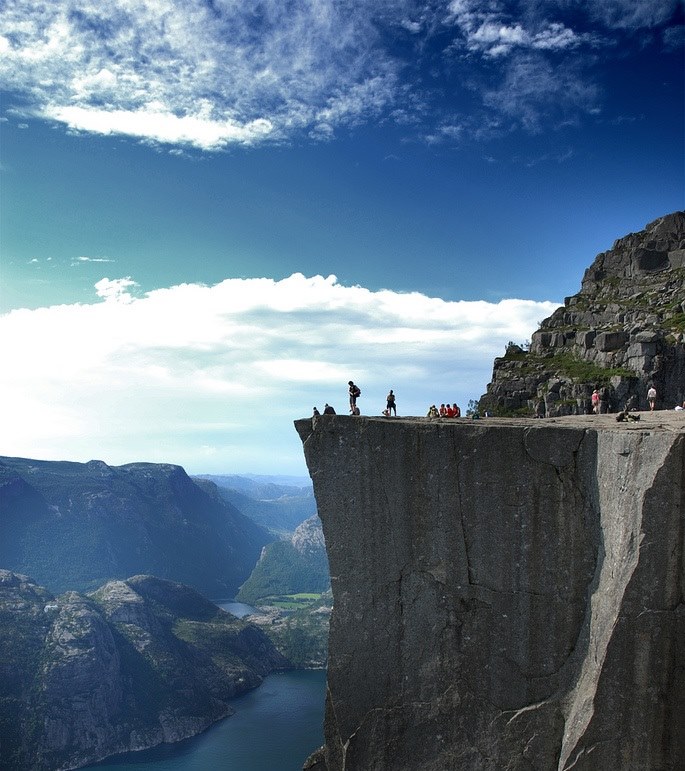Pulpit Rock(Preikestolen), Located in Ryfylke, the southwestern part of Norway, it is famous for being a flat-topped cliff that rises 604 meters (1,982 feet) above the Lysefjord. The top of the rock is approximately 25 by 25 meters (82 by 82 feet). This natural wonder attracts thousands of tourists every year who come to admire the panoramic views of the fjord and surrounding mountains.
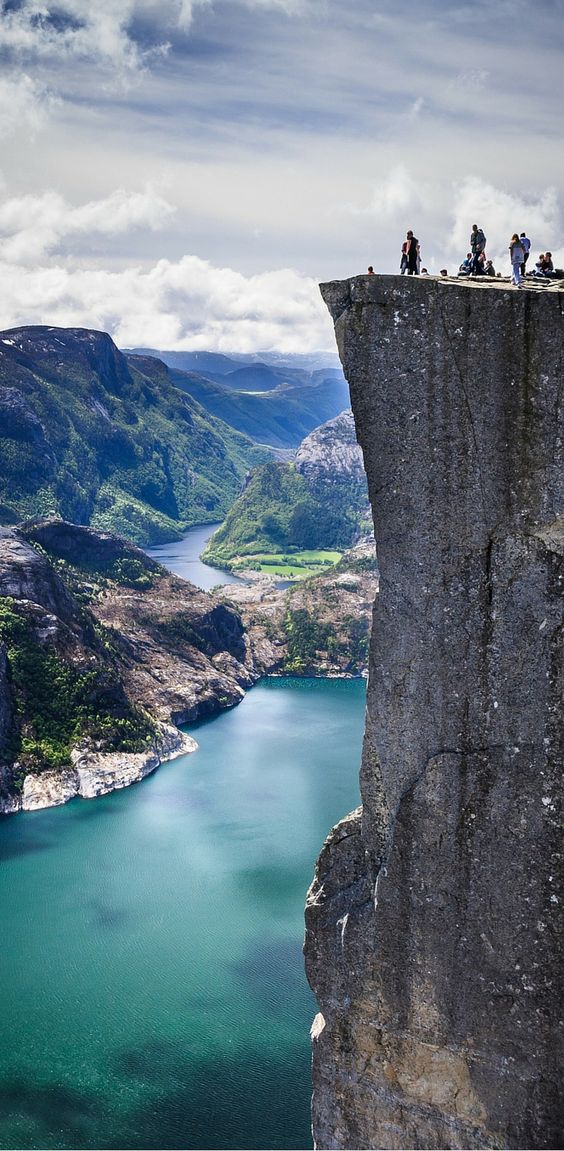
The Origins of Pulpit Rock
Pulpit Rock was created during the last ice age when glaciers moved across the area, carving out the valley that is now the Lysefjord. The rock’s flat top was formed by water erosion and weathering over thousands of years.
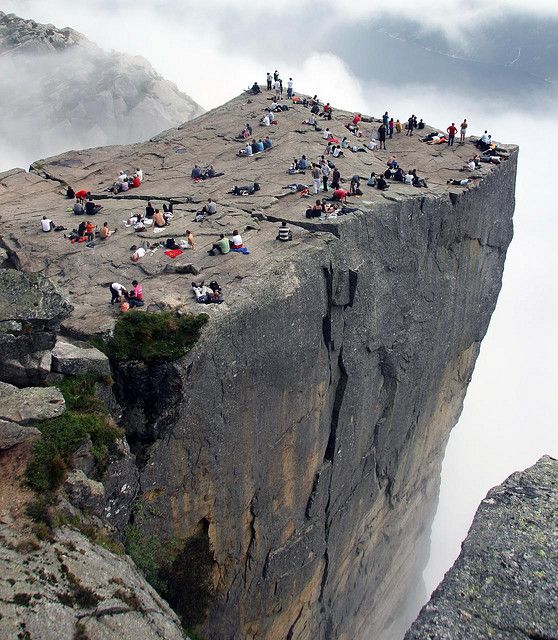
According to legend, the name “pulpit” was given to the rock by a Norwegian bishop who claimed he wanted to preach there. Whether the story is true or not, Pulpit Rock serves as a symbol of Norway’s natural and cultural heritage.
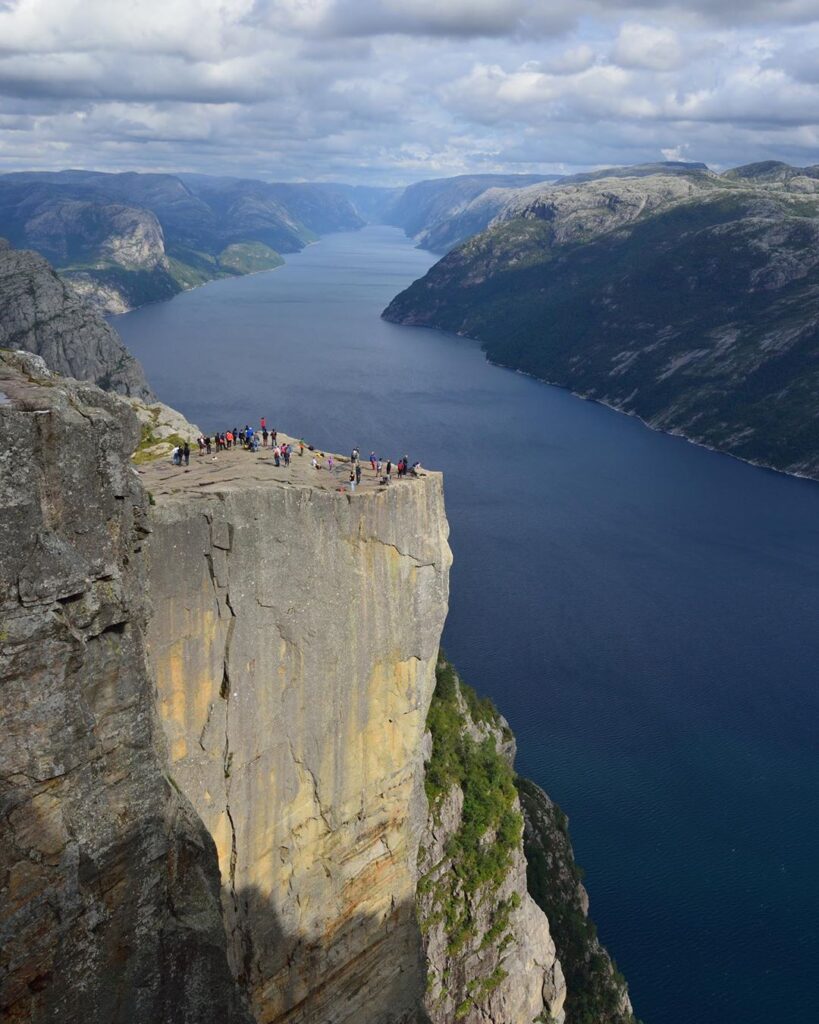
The Hike to Pulpit Rock
The hike to Pulpit Rock is not for the faint of heart. It takes approximately two hours each way, and the trail is strenuous with rocky terrain and steep inclines.
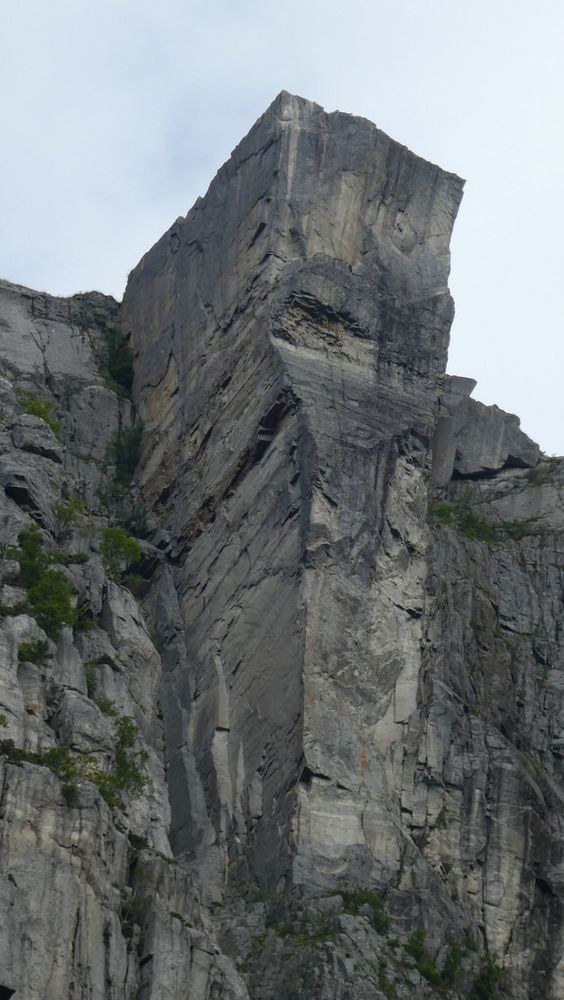
However, the reward is worth it when you reach the top and experience the awe-inspiring scenery. Along the way, there are several viewpoints where hikers can rest and take in the scenery. The hike is best done during the summer months when the weather is milder and the daylight hours are longer.
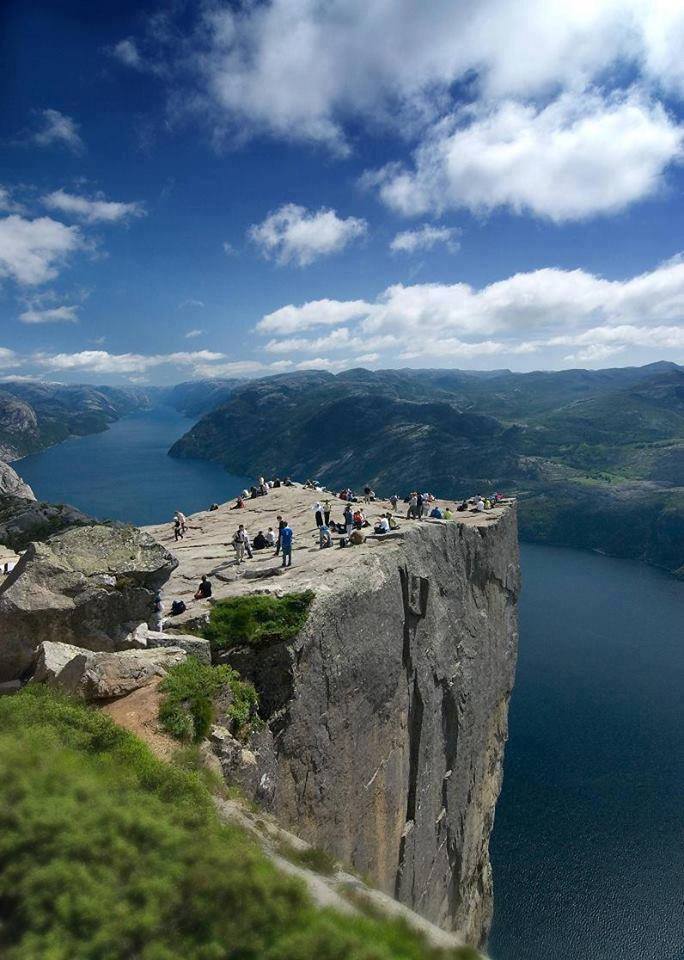
Tourism and Conservation
With its popularity as a tourist attraction, Pulpit Rock attracts a large number of visitors every year. To preserve the natural beauty of the area, the Norwegian government has implemented several regulations. For example, camping or picnicking on the top of the rock is strictly prohibited, and hikers are not allowed to stray from the marked trail. This ensures that the ecosystem remains undisturbed, allowing visitors to enjoy its incredible beauty for generations to come.
